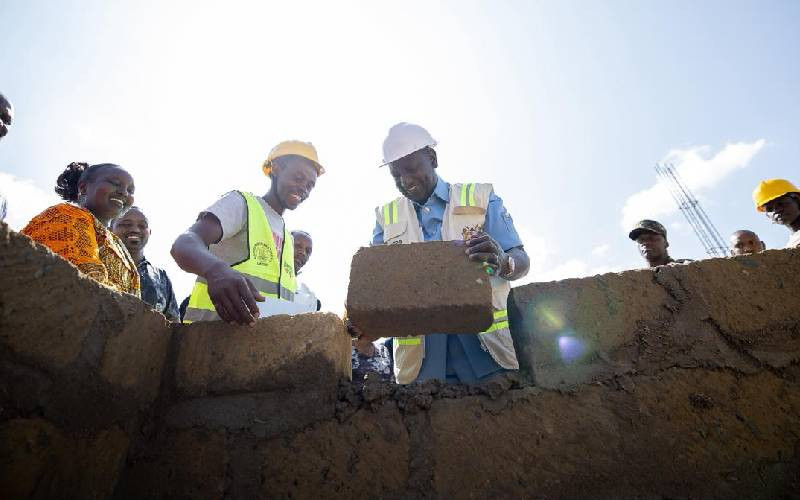
The Affordable Housing Programme (AHP) remains one of Kenya’s most ambitious national development initiatives. Its promise of modern housing, job creation, and improved living standards is compelling. Yet in the Northern Frontier counties, this promise is at risk of collapsing under the weight of procedural violations, legal shortcuts, and a worrying disregard for established land governance laws.
In Mandera, Wajir, Garissa, Lamu, Isiolo, Marsabit and Turkana counties, the land tenure system is overwhelmingly community land, held in common by clans and regulated under the Community Land Act, 2016 (CLA). Any attempt to develop large-scale housing without following the due process prescribed by this law is not merely irregular, it is illegal.
Yet, across these counties, regional and county-based officers from the State Department of Housing have been staging site handovers and contracting works before securing basic prerequisites: land tenure regularization, community consent, and county-level planning approvals. In Mandera County alone, proposed AHP projects in Rhamu, Mandera North, Mandera East, and Mandera South already face paralysis because the most fundamental requirement, lawful land acquisition has not occurred.
To appreciate the scale of this misstep, one must return to the Community Land Act, 2016, which outlines in black and white how community land may be converted to public land for national government projects:
Conversion of Community Land: Section 8 of the Act provides that community land may only be converted to public land through compulsory acquisition, transfer, or surrender. Crucially, the process must comply with the Land Act, 2012; It must include full, prior, and informed consent of the community; And compensation must be prompt, just, and transparent.
Recognition, Registration, and Adjudication: Sections 5-7 of the Act directs that before any conversion, the land must be registered as community land. Until that happens, no government entity may treat it as public land or begin development activities.
Community Decision-Making: Section 13 of the Act dictates that any decision affecting community land, such as allocation for AHP requires;
A quorum of two-thirds of the adult members of the community assembly; and
Approval by the community through a transparent, participatory process.
Ignoring this legal framework renders any development invalid and exposes the project, contractors, and even public officers to litigation and audit sanctions.
Yet the common justification given by field officers is that AHP is a “presidential directive” and therefore exempt from county approvals or community land procedures. This argument is not just flawed—it is unconstitutional. A presidential directive cannot override statutes or the Constitution.
The Fourth Schedule of the Constitution vests county governments with authority over;
County planning and development,
Land survey and mapping,
Issuance of building permits, and
Stay informed. Subscribe to our newsletter
Enforcement of zoning and development control.
The recent circular from the Executive Office of the President—ironically—reinforces this point, directing all state corporations and agencies to secure full compliance with county physical planning laws, obtain development approvals, and regularize ongoing projects by stipulated deadlines. To ignore county planning authorities is therefore to ignore the law.
The real danger
Projects initiated on unregistered or unconverted community land risk court injunctions, community disputes, possible demolition, loss of public funds and project abandonment.
The AHP in the Northern Frontier is already drifting toward this fate—not because counties refuse to cooperate, but because due process was bypassed.
The path forward is clear and urgent;
Undertake full land adjudication and registration under the Community Land Act.
Secure community consent in line with Section 13,
Convert land to public land lawfully under Section 8 before any construction,
Submit all development plans, surveys, and ESIA reports to county planning authorities,
Suspend ground activities until approvals and permits are issued.
Kenya cannot afford to build houses on illegal foundations. Respect for community land rights and county planning authority is not a bureaucratic inconvenience—it is the bedrock of lawful, sustainable development.
If the AHP is to succeed in northern Kenya, it must first obey the law. Before building homes, we must build compliance. Only then will these projects truly stand.
The writer is the chairperson Land Sector Forum and CECM Lands, Physical Planning Housing and Urban Development, County Government of Mandera







